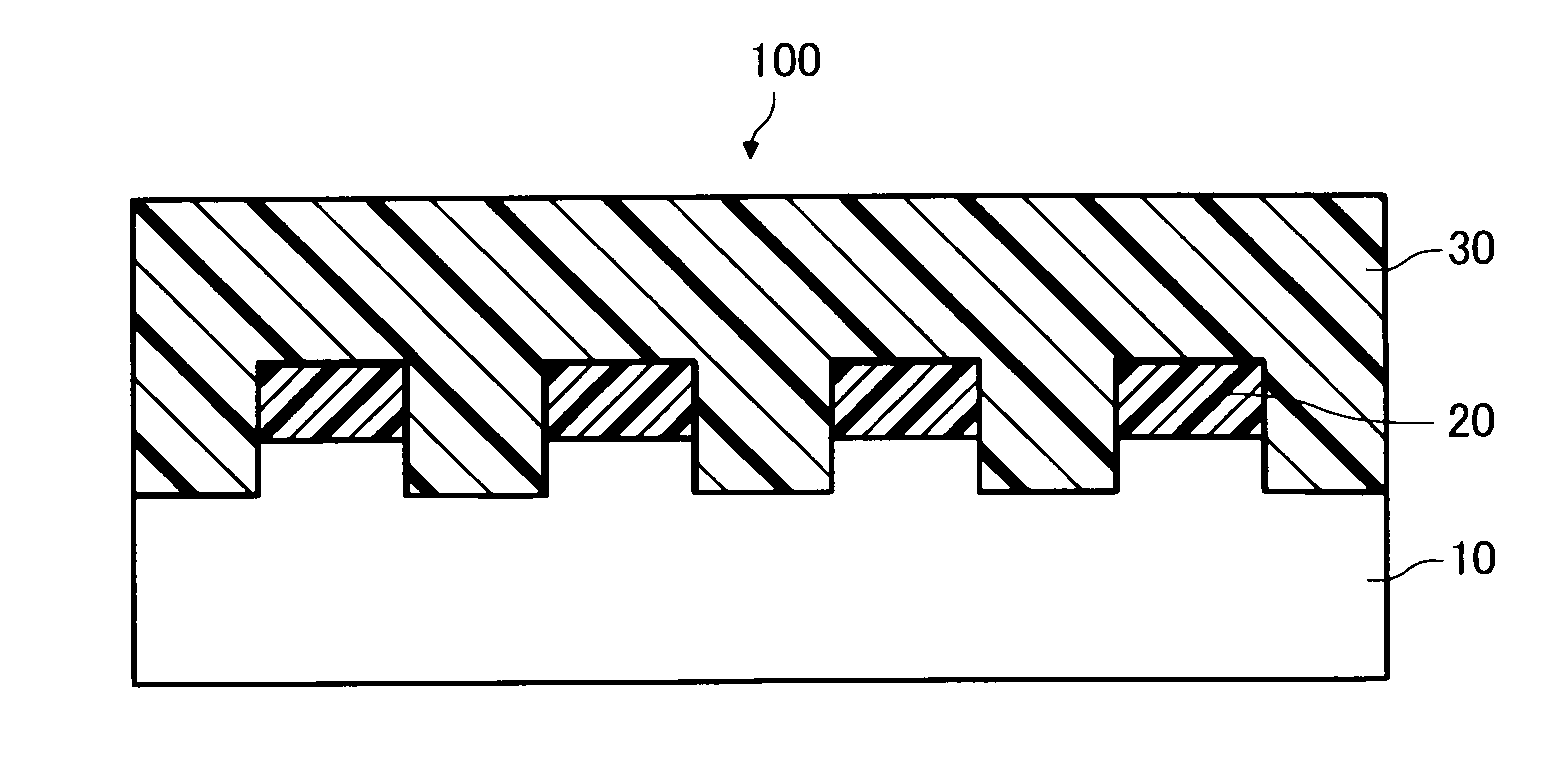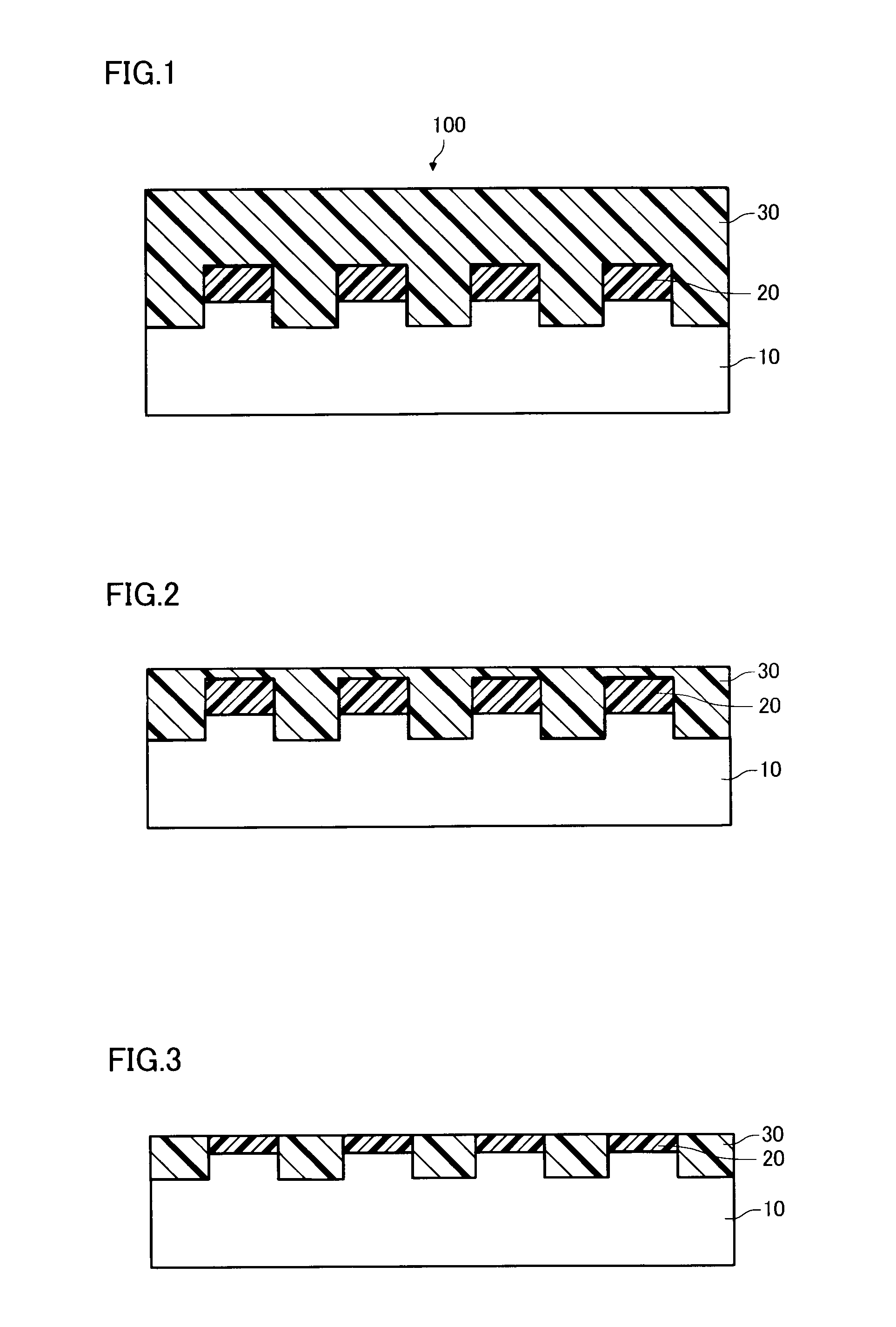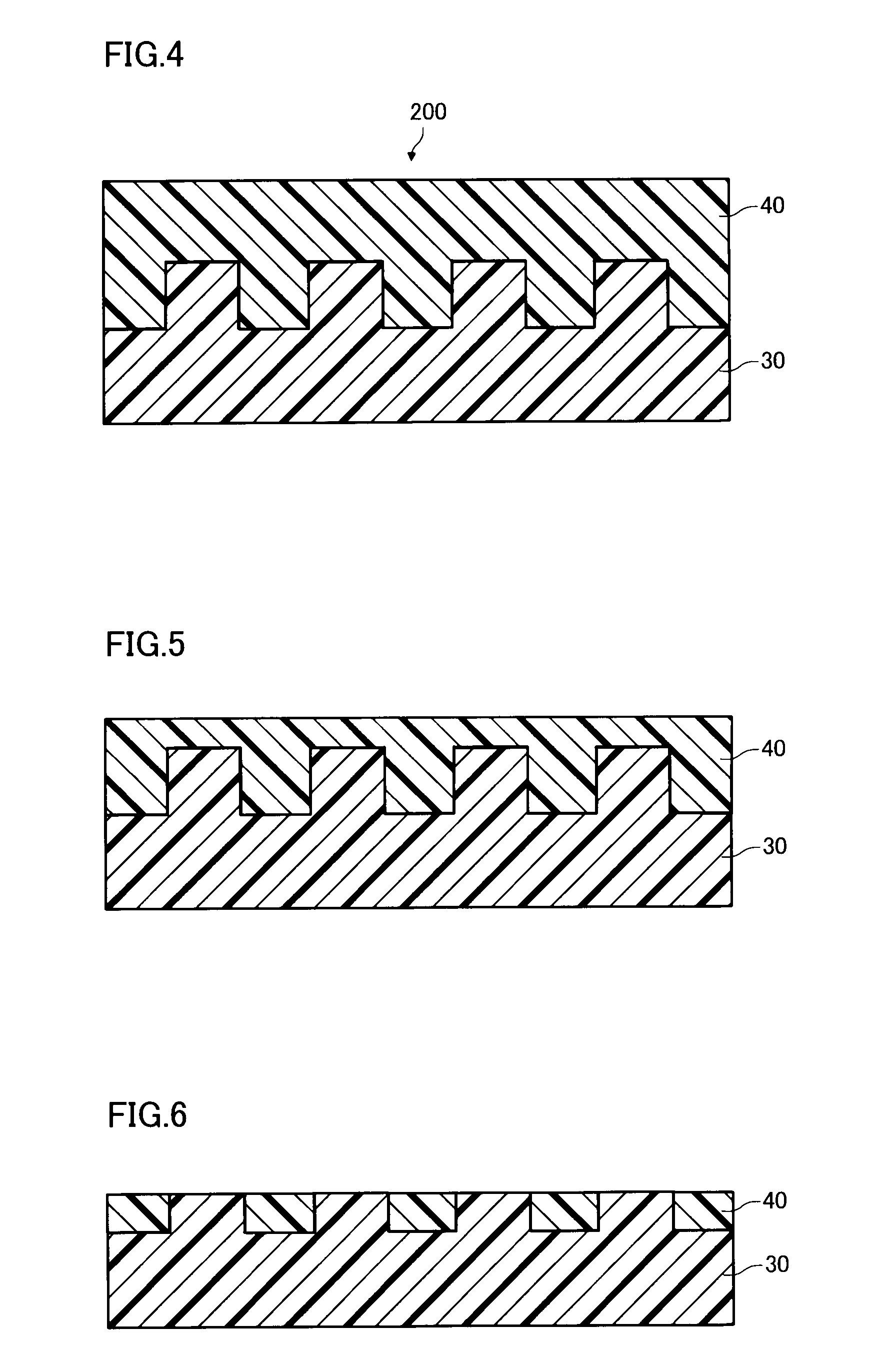Chemical mechanical polishing aqueous dispersion and chemical mechanical polishing method for semiconductor device
a chemical mechanical and semiconductor technology, applied in the direction of coating machines, nanoinformatics, manufacturing tools, etc., can solve the problems of inability to polish, and inability etc., to achieve the desired thickness, the effect of sufficient and almost equal polishing rates
- Summary
- Abstract
- Description
- Claims
- Application Information
AI Technical Summary
Benefits of technology
Problems solved by technology
Method used
Image
Examples
examples 1 to 8
3.4 Examples 1 to 8 and Comparative Examples 1 to 10
[0075]In Examples 1 to 8 and Comparative Examples 1 to 10, the component or the concentration of the chemical mechanical polishing aqueous dispersion was changed as shown in Tables 1 and 2. Tables 1 and 2 also show the test results.
[0076]When using the chemical mechanical polishing aqueous dispersions of Examples 1 to 8, the polishing rate ratio of the polysilicon film to the silicon oxide film and the polishing rate ratio of the silicon nitride film to the silicon oxide film were 0.9 to 1.1. The polishing rate of each film was 20 nm / min or more. Specifically, the chemical mechanical polishing aqueous dispersions of Examples 1 to 8 showed a sufficient polishing performance. Therefore, when a semiconductor device having a polishing target surface formed by a polysilicon film, a silicon nitride film, and a silicon oxide film is chemically and mechanically polished by using the chemical mechanical polishing aqueous dispersions of Exam...
first experimental example
3.5.1 First Experimental Example
[0088]An evaluation substrate having a polishing target surface formed by a silicon nitride film 20 and a silicon oxide film 30 was provided by preliminarily polishing a commercially available test wafer 100 in which the silicon nitride film 20 was embedded. As the test wafer 100, Sematech 864 (manufactured by Sematech) was used. FIG. 1 is a cross-sectional view showing the test wafer 100. The thickness of the silicon oxide film 30 was 500 nm, and the thickness of the silicon nitride film 20 was 150 nm. The test wafer 100 was preliminarily polished under the following polishing conditions 2 by using CMS4301 and CMS4302 (manufactured by JSR Corporation). Preliminarily polishing was finished in a state in which 50 nm of the silicon oxide film 30 remained on the silicon nitride film 20 to obtain an evaluation substrate, as shown in FIG. 2.
[0089]After preliminarily polishing, the thickness of the silicon oxide film 30 on the silicon nitride film 20 within...
second experimental example
3.5.2 Second Experimental Example
[0092]An evaluation substrate having a polishing target surface formed by a polysilicon film 40 and a silicon oxide film 30 was provided by preliminarily polishing a commercially available test wafer 200 in which the polysilicon film 40 was embedded. As the test wafer 200, SKW3PS (manufactured by SKW) was used. FIG. 4 is a cross-sectional view showing the test wafer 200. The thickness of the polysilicon film 40 was 600 nm, and the thickness of the silicon oxide film 30 was 400 nm. The test wafer 200 was preliminarily polished under the following polishing conditions 3 by using a polysilicon polishing composition. Preliminarily polishing was finished in a state in which 50 nm of the polysilicon film 40 remained on the silicon oxide film 30 in depressions to obtain an evaluation substrate, as shown in FIG. 5.
[0093]After preliminarily polishing, the thickness of the polysilicon film 40 on the silicon oxide film 30 within a 100-micrometer pattern pitch w...
PUM
 Login to View More
Login to View More Abstract
Description
Claims
Application Information
 Login to View More
Login to View More - R&D
- Intellectual Property
- Life Sciences
- Materials
- Tech Scout
- Unparalleled Data Quality
- Higher Quality Content
- 60% Fewer Hallucinations
Browse by: Latest US Patents, China's latest patents, Technical Efficacy Thesaurus, Application Domain, Technology Topic, Popular Technical Reports.
© 2025 PatSnap. All rights reserved.Legal|Privacy policy|Modern Slavery Act Transparency Statement|Sitemap|About US| Contact US: help@patsnap.com



